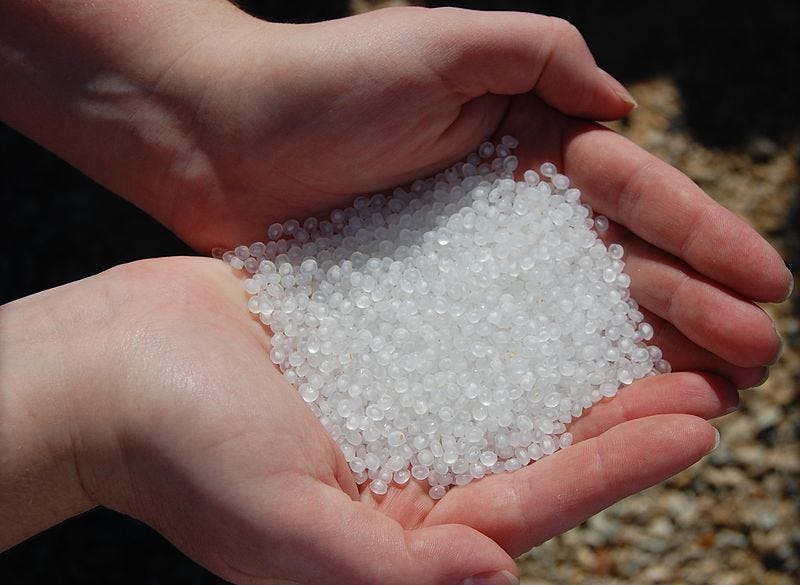
Our world is filled with plastic; cups, straws, bottles, wrappers, toys, bags and other items too numerous to mention.
While large plastic items, like water bottles, have always been a water pollution concern, a new threat has been identified: microplastics.
Microplastics are pieces of plastic less than 5 millimeters in size. That is 0.2 inches, or about the diameter of an eraser on the end of a pencil.
There are two kinds of microplastics:
●Primary microplastics are small pellets called “nurdles.” These are used to manufacture plastic items such as toys and plastic storage containers. Other primary microplastics include the small beads found in some personal care products, like face wash and body scrubs.
●Secondary microplastics come from the breaking down of larger plastic items, like bags and water bottles, through ultraviolet light, chemical or microbial processes.
Scientists estimate that about 8 million metric tons of plastic enter the ocean each year. Polyethylene microplastics — found in personal care products as well as plastic fibers from washing synthetic clothing — can enter coastal waters in wastewater effluent. Wastewater treatment plants don’t have the capability to remove these small buoyant plastic pieces and fibers.
Unfortunately, these petroleum-based plastics never biodegrade. They just break down into small pieces. In the ocean, toxins can attach to the surface of the plastics. Birds, fish and mammals often mistake the microplastics for food, leading to clogged digestive systems.
The Florida Microplastic Awareness Project is a citizen science project to raise awareness about the sources of and threats posed by microplastics in the coastal environment. Volunteers are collecting and analyzing water samples from around the state, documenting the presence of microplastics.
In Okaloosa County, the University of Florida Institute of Food and Agricultural Sciences has partnered with the Choctawhatchee Basin Alliance and Northwest Florida State College to participate in this effort. Volunteers collect water samples from around the area while students filter the samples and record results on the FMAP website.
You can help too.
1. Read labels. Choose personal care products that do not contain polyethylene
2. Reduce, reuse, recycle and refuse plastic. Do you really need that plastic bag or drinking straw? Use a refillable water bottle.
3. During September, read and share daily posts on the Florida Microplastic Awareness Project's Facebook page as well as on the project's website (www.plasticaware.org). You also can sign the pledge and join a free webinar on Sept. 16.
Laura Tiu is an agent at the University of Florida's Institute of Food and Agricultural Sciences Extension office in Crestview.
This article originally appeared on Crestview News Bulletin: TIU: Just say ‘no’ to microplastics
